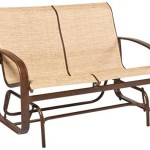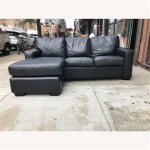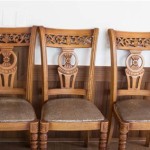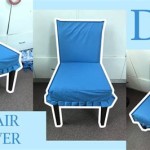White Marks on Wood Furniture: Identification, Causes, and Remediation
White marks on wood furniture are a common household nuisance, often appearing unexpectedly and detracting from the aesthetic appeal of the piece. These blemishes, typically ranging from faint haziness to pronounced rings or blotches, are not ingrained within the wood itself but rather affect the finish that protects it. Understanding the nature of these marks, their underlying causes, and the appropriate methods for their removal is crucial for preserving the beauty and longevity of wood furniture.
The term "white mark" is a general descriptor encompassing several different types of blemishes. It's important to distinguish between these marks to effectively address the problem. The most common culprits are heat rings, water rings, and general haziness resulting from moisture exposure. Each of these presents a slightly different challenge and requires a tailored approach to remediation.
Before attempting any repair, it's crucial to identify the type of finish on the wood furniture. Common finishes include lacquer, varnish, polyurethane, shellac, and wax. The type of finish will dictate the appropriate cleaning and repair methods. Testing a small, inconspicuous area with a mild solvent can help determine the finish type. For example, if a small amount of denatured alcohol softens the finish, it is likely shellac. If it resists the alcohol, it’s likely a more durable finish like lacquer or polyurethane.
Understanding the Causes of White Marks
The root cause of white marks on wood furniture invariably involves moisture or heat interacting with the finish. The finish acts as a protective barrier, shielding the wood from direct contact with environmental factors. However, this barrier is not impervious, and prolonged exposure to heat or moisture can compromise its integrity.
Heat rings, for example, are typically caused by placing hot objects, such as coffee mugs or dishes, directly onto the furniture surface without adequate protection. The heat forces moisture trapped within the finish to rise to the surface, creating a cloudy appearance. This is particularly prevalent with older finishes, which may be more porous and susceptible to moisture penetration.
Water rings, similarly, result from prolonged contact with liquids. Spilled drinks, condensation from glasses, or even damp cloths left on the surface can all lead to water seeping into the finish and causing a white ring to form. The water disrupts the finish's uniform appearance, creating a visible demarcation.
General haziness, a less defined form of white marking, often occurs due to overall moisture exposure. This can be caused by high humidity levels, spills that are not immediately cleaned, or even the use of improper cleaning products. Over time, this moisture gradually penetrates the finish, creating a widespread cloudy or hazy film.
Certain finishes are more susceptible to white marking than others. Shellac, for instance, is particularly sensitive to both heat and moisture. Wax finishes, while offering a natural and aesthetically pleasing look, provide minimal protection against these elements. Polyurethane finishes are generally more durable and resistant to moisture and heat, but they are not entirely immune.
Prevention is always the best approach to dealing with white marks. Using coasters, placemats, and trivets can significantly reduce the risk of heat and water rings. Promptly cleaning up spills and avoiding the use of harsh chemicals or abrasive cleaners will also help to protect the finish. Maintaining a consistent humidity level in the home can also minimize moisture-related issues.
Remediation Techniques: Targeted Approaches
The approach to removing white marks depends on the severity and type of the mark, as well as the type of finish on the furniture. Starting with the gentlest method and progressing to more aggressive techniques is generally recommended to avoid damaging the finish.
A simple initial step involves using a soft cloth and a mild polish. Gently buffing the affected area in circular motions may be sufficient to remove minor haziness or light rings. The polish helps to redistribute the finish and restore its clarity. It is crucial to use a polish specifically designed for wood furniture and to avoid excessive pressure, which could scratch the surface.
For more persistent marks, a heat method can be employed. Place a thick cloth, such as a towel or t-shirt, over the affected area. Then, using an iron set to a low heat setting (no steam), gently iron over the cloth. The heat from the iron helps to draw the moisture out of the finish. Check the area frequently and lift the cloth to assess progress. It is vital to avoid overheating the surface, which could cause further damage to the finish or even scorch the wood.
Another common technique involves using a mixture of equal parts olive oil and vinegar. Apply a small amount of the mixture to a soft cloth and gently rub it onto the white mark in circular motions. The oil helps to moisturize the finish, while the vinegar acts as a mild solvent to dissolve the trapped moisture. Wipe away any excess mixture with a clean, dry cloth. This method is often effective for removing water rings and minor haziness.
For more stubborn white marks, particularly those on shellac finishes, denatured alcohol can be used. Dampen a soft cloth with denatured alcohol and gently wipe the affected area. Be extremely cautious when using denatured alcohol, as it can quickly dissolve shellac and potentially damage other finishes. Work in small, controlled strokes and immediately wipe away any excess alcohol. This method should only be used as a last resort and with extreme care.
In some cases, particularly with older or heavily damaged finishes, professional refinishing may be the only viable solution. Refinishing involves stripping the old finish, sanding the wood surface, and applying a new finish. This is a more involved and potentially costly process, but it can restore the furniture to its original condition.
Preventive Measures: Safeguarding Your Furniture
While remedial actions can address existing white marks, implementing preventive measures is the most effective way to protect wood furniture from future damage. These measures focus on minimizing exposure to heat and moisture and maintaining the integrity of the finish.
The most fundamental preventive measure is the consistent use of coasters, placemats, and trivets. These items create a barrier between hot or wet objects and the furniture surface, preventing heat and moisture from penetrating the finish. Choose coasters and placemats that are absorbent and provide adequate insulation.
Promptly cleaning up spills is essential. The longer a liquid remains on the surface, the greater the likelihood of it seeping into the finish and causing a white mark. Use a soft, absorbent cloth to blot the spill immediately, avoiding rubbing, which could spread the liquid and damage the finish.
Avoid using harsh chemicals or abrasive cleaners on wood furniture. These substances can strip away the finish and leave the wood vulnerable to damage. Instead, opt for mild, pH-neutral cleaning solutions specifically designed for wood furniture. Always test the cleaner in an inconspicuous area before applying it to the entire surface.
Maintaining a consistent humidity level in the home can also help to prevent moisture-related problems. High humidity can cause the wood to expand and contract, which can stress the finish and make it more susceptible to damage. Using a dehumidifier during humid months can help to regulate the humidity level.
Regularly dusting and polishing wood furniture can also help to protect the finish. Dust acts as an abrasive, gradually scratching the surface over time. Polishing helps to maintain the finish's luster and provides a protective layer against moisture and other environmental factors. Choose a polish specifically designed for the type of finish on the furniture.
Consider applying a protective wax coating to wood furniture. Wax provides a barrier against moisture and helps to prevent scratches and scuffs. Apply a thin, even coat of wax and buff it to a shine with a soft cloth. Reapply the wax every few months or as needed.
Finally, be mindful of the placement of wood furniture. Avoid placing it in direct sunlight or near heat sources, such as radiators or fireplaces. Prolonged exposure to sunlight can fade the finish, while heat sources can cause the wood to dry out and crack.
By understanding the causes of white marks, employing appropriate remediation techniques, and implementing preventive measures, it is possible to maintain the beauty and longevity of wood furniture and safeguard it from these common blemishes. Careful attention to detail and a proactive approach are key to preserving the value and aesthetic appeal of these cherished pieces.

Say Goodbye To Hazy White Stains On Your Wood Table Quick Easy Solution Youtube

How To Remove White Heat Marks On Furniture Jenny Komenda

How To Remove White Heat Marks On Furniture Jenny Komenda

How To Remove White Heat Marks Rings From Timber Furniture Care Products

Furniture How Do I Remove White Beverage Stains From My Dark Finished Wood Table Home Improvement Stack Exchange

White Marks On Your Furniture Wood Menders

Learn How To Remove Hazy White Stains On A Wood Table Adorn The

How To Remove White Stains From Wooden Furniture Cabana State Of Mind

How To Remove White Heat Marks Rings From Timber Furniture Care Products

Photo Quiz What Are These White Spots On The Wood Floor Business








